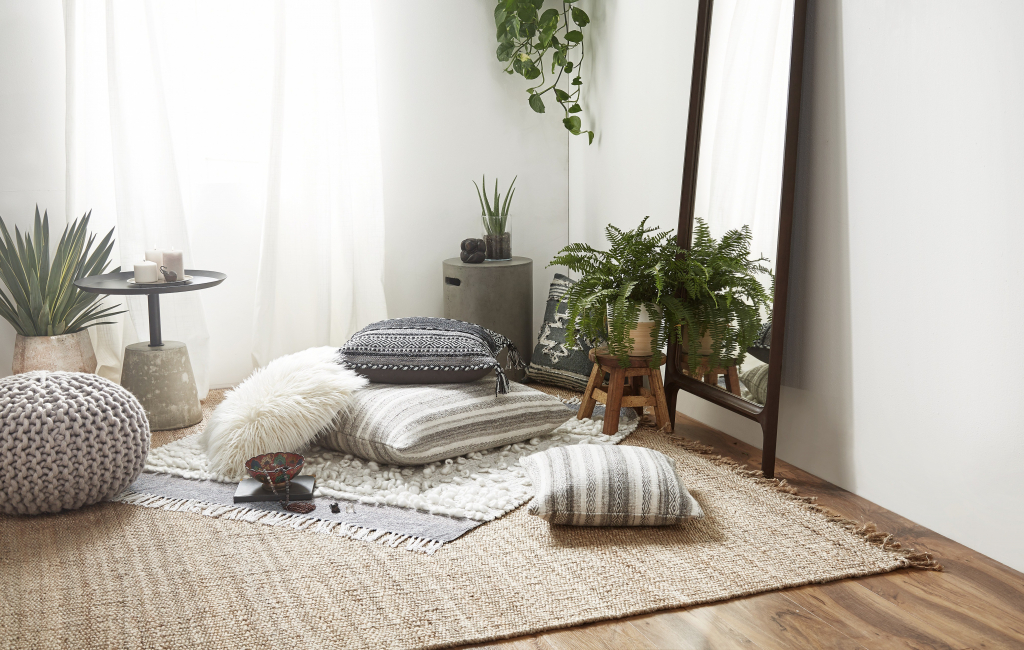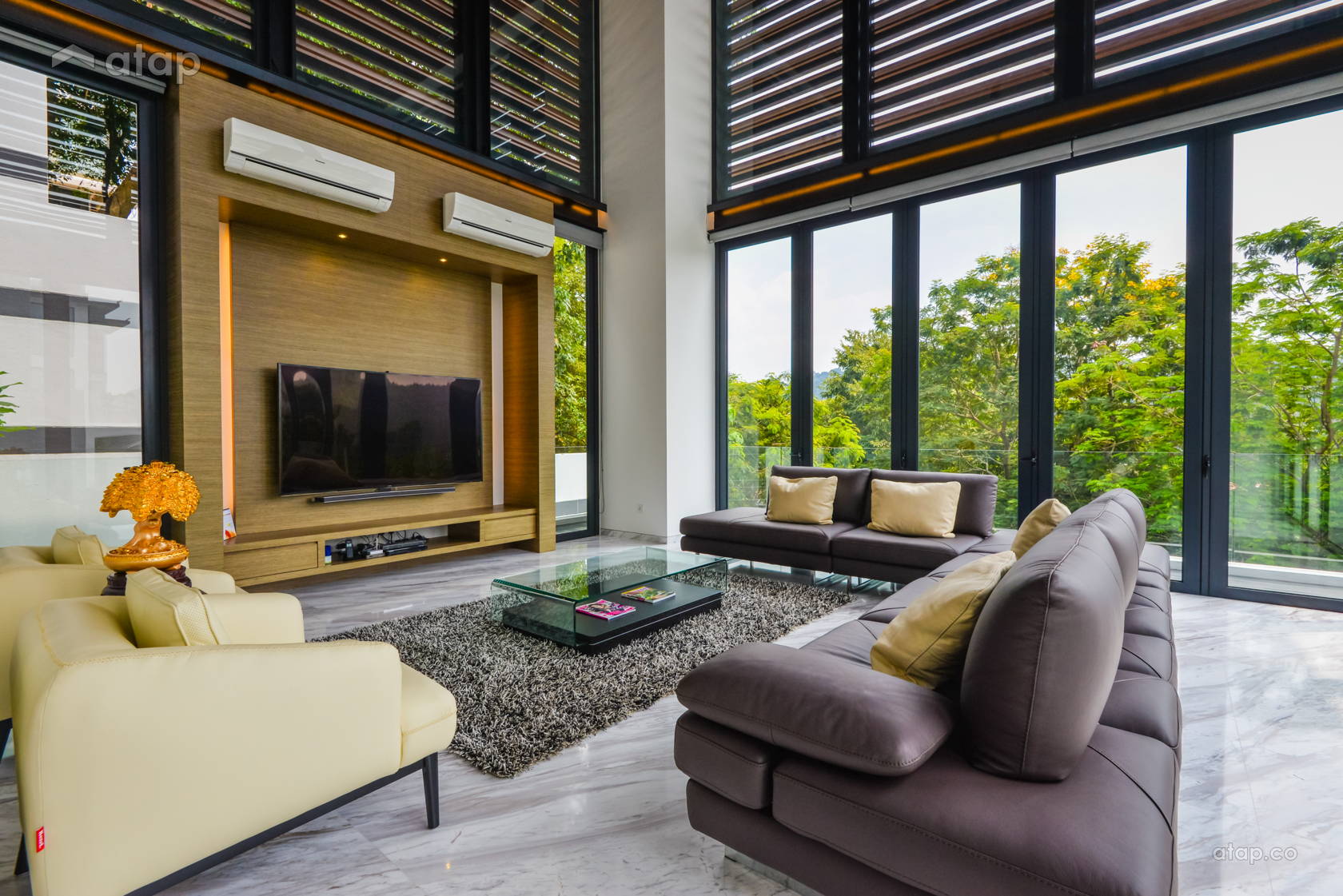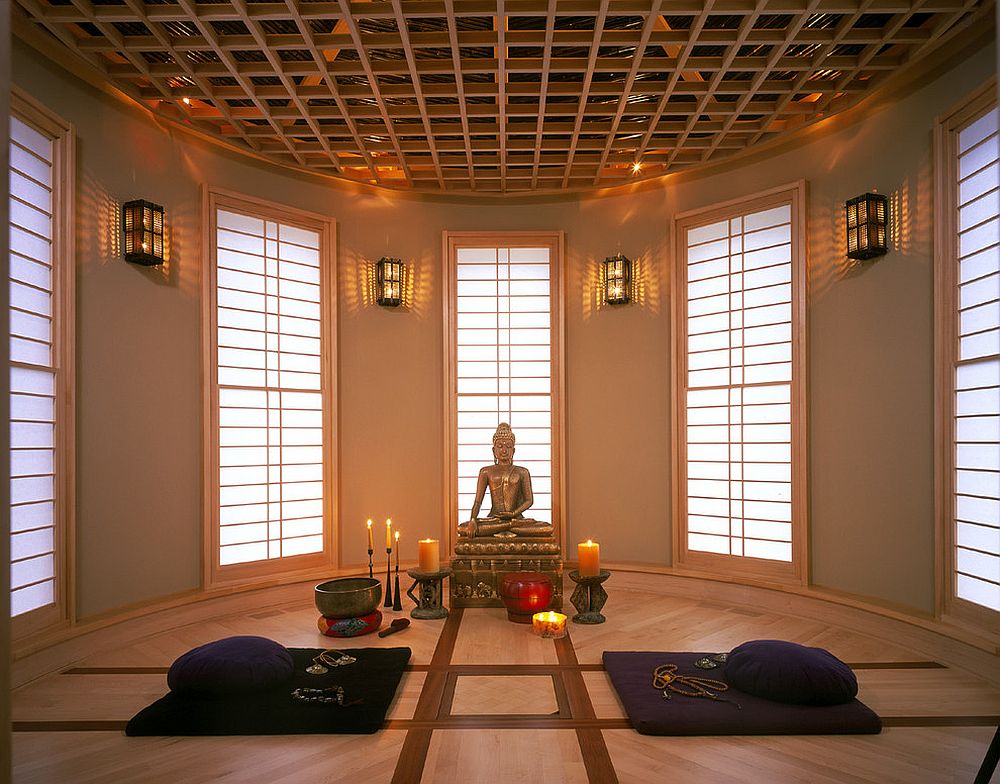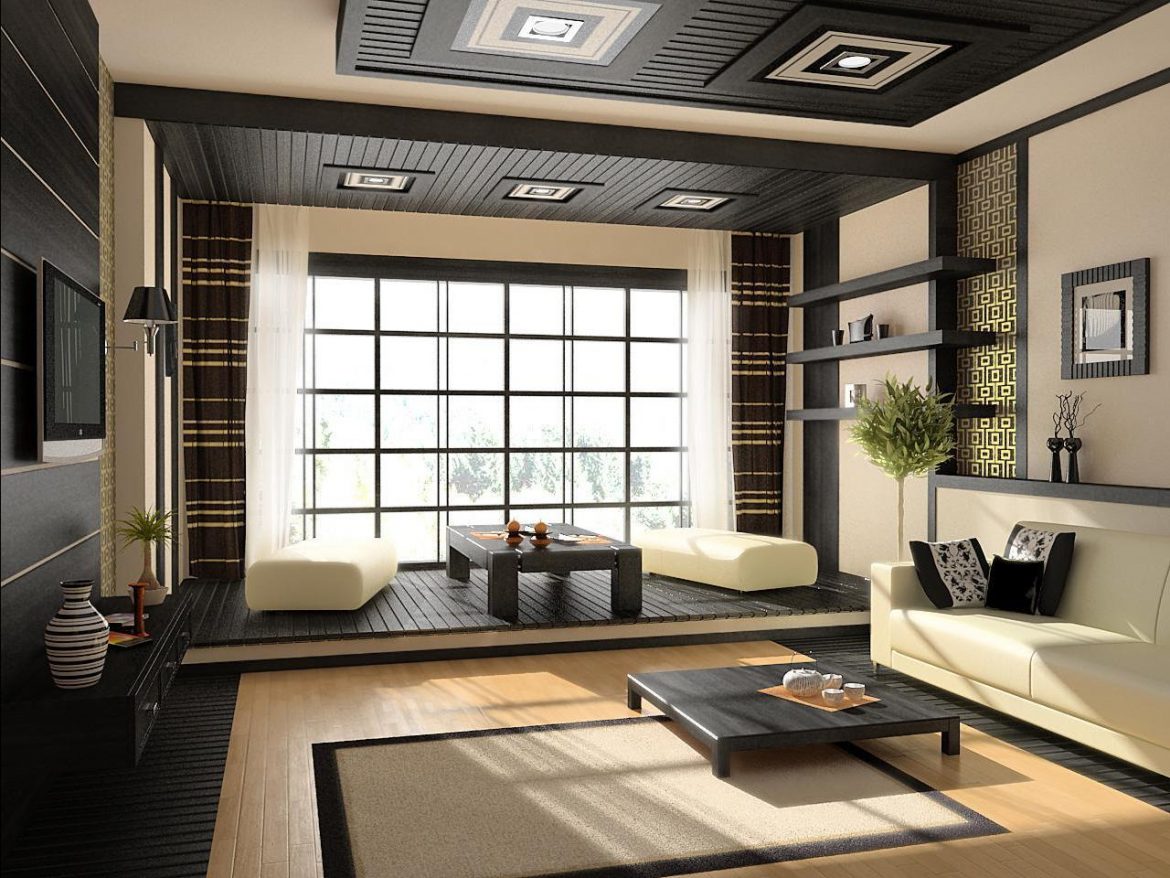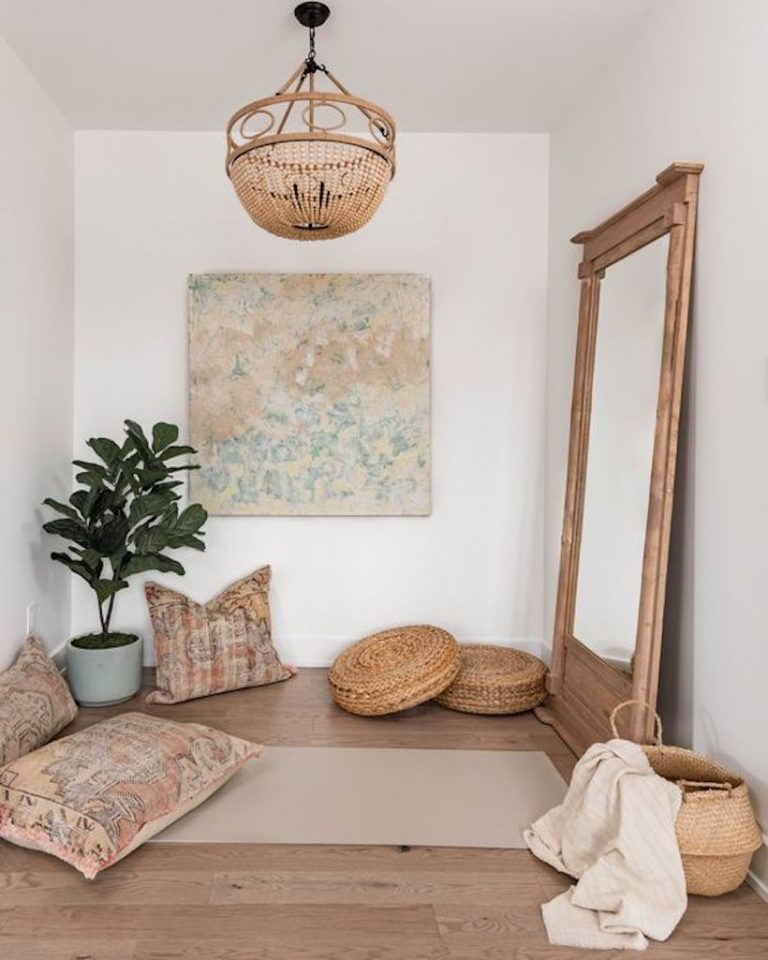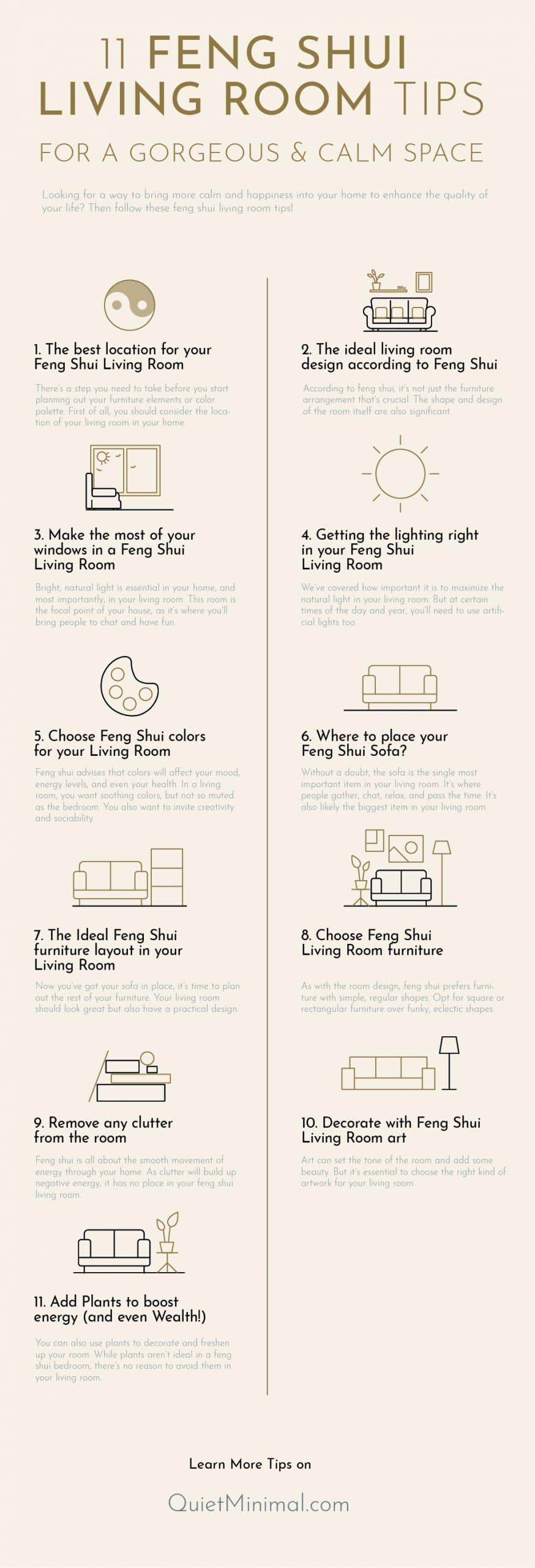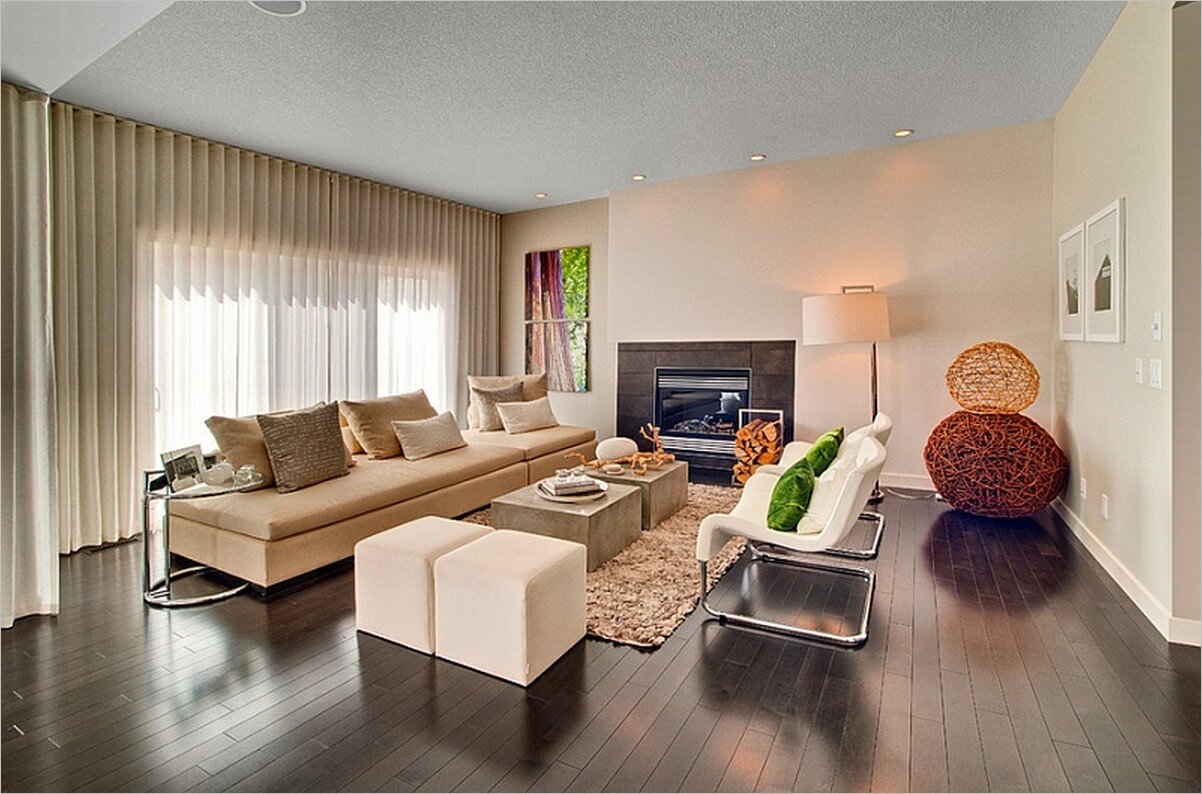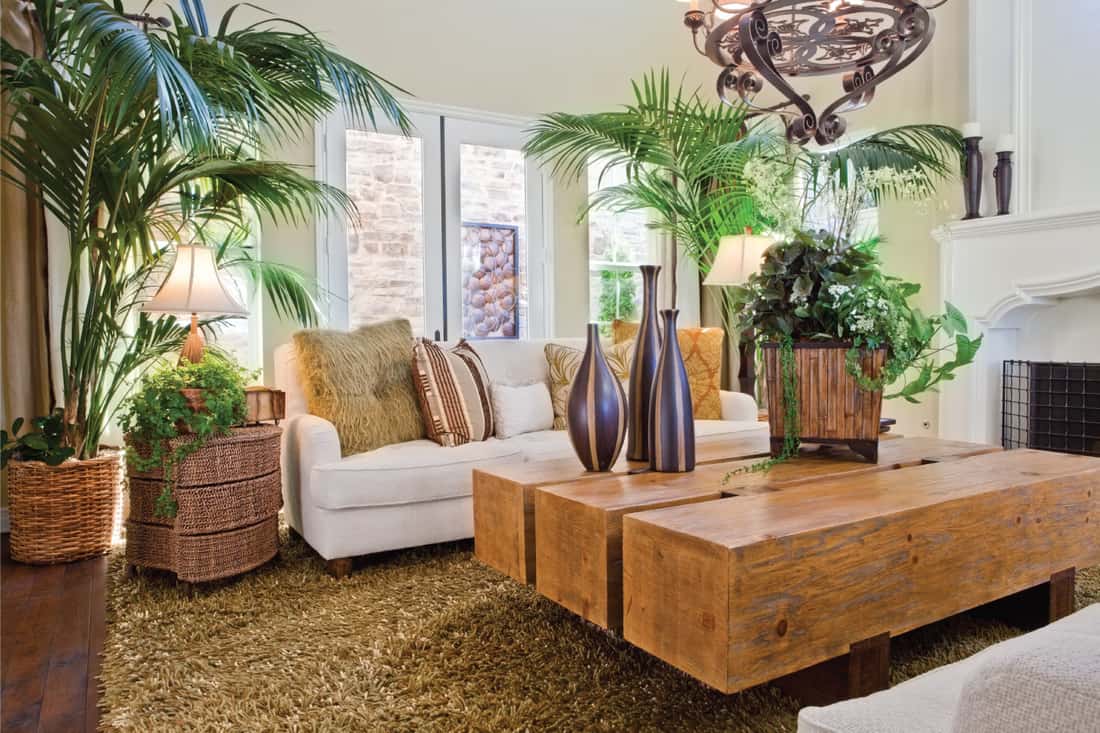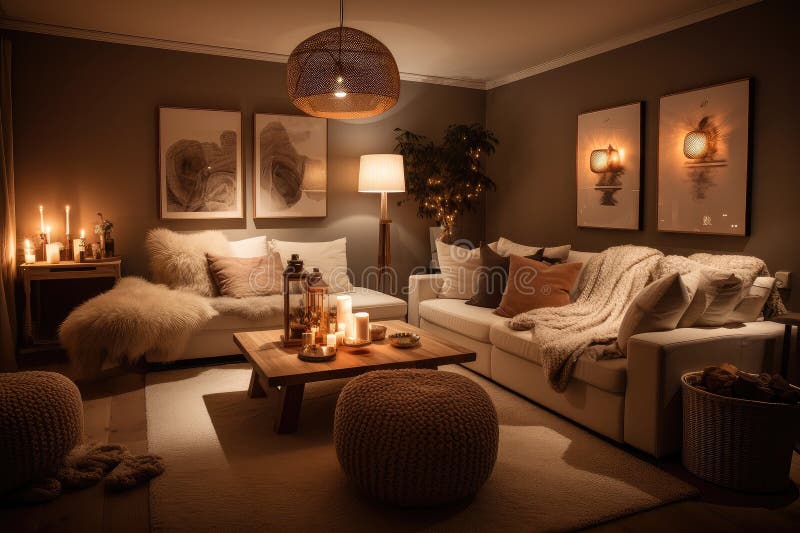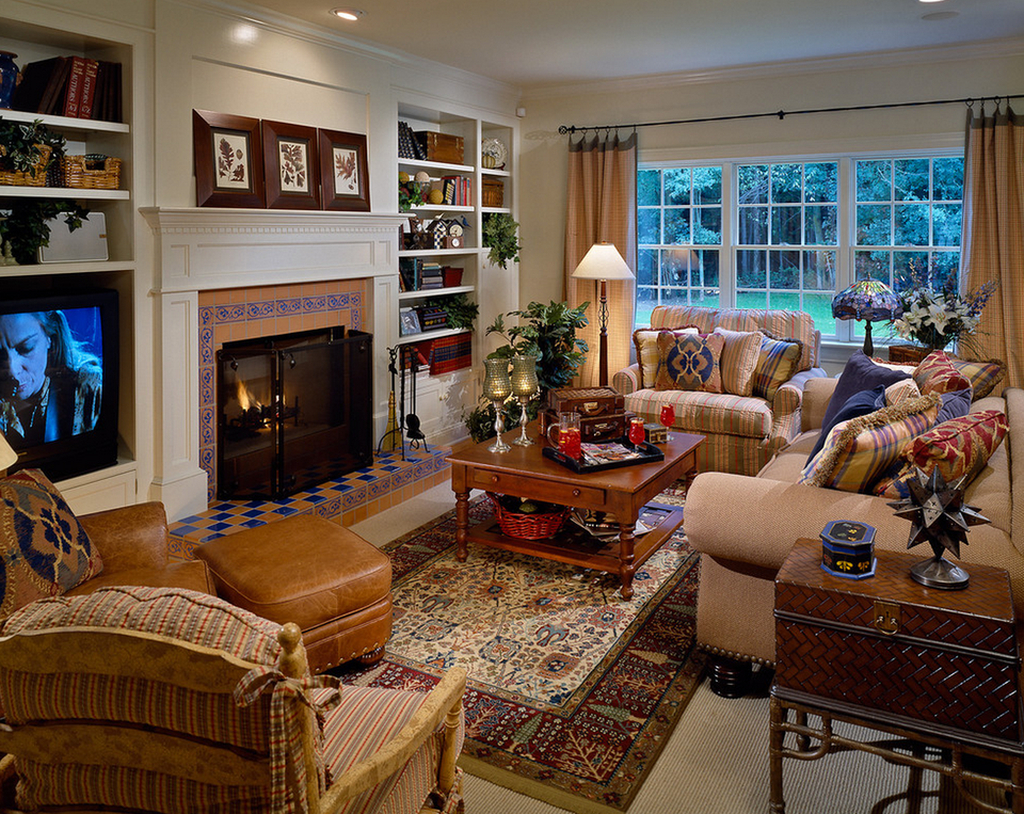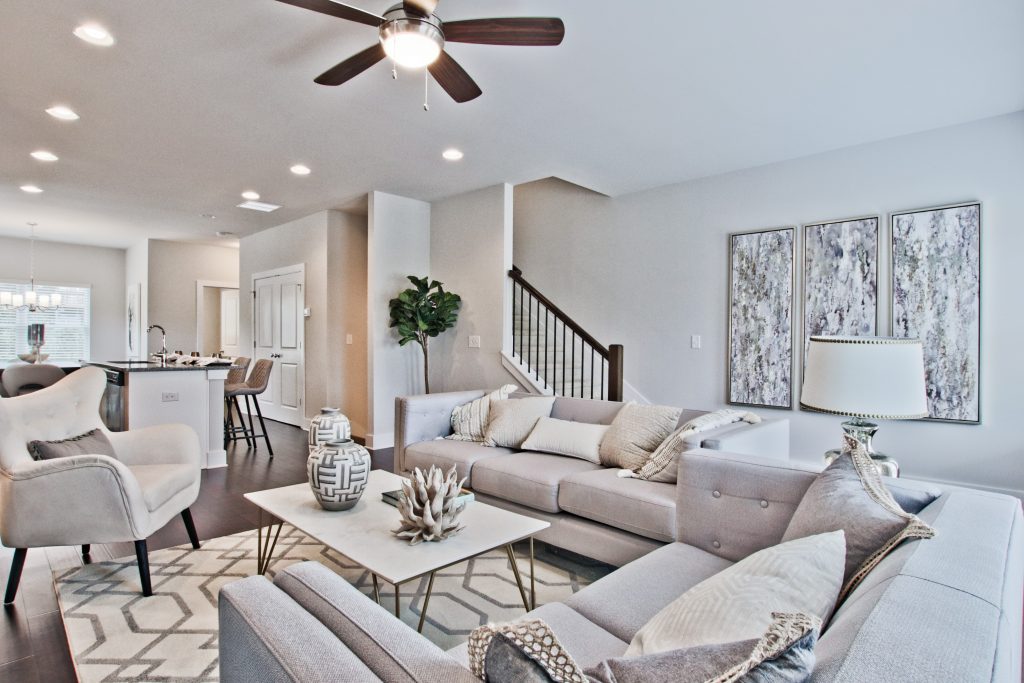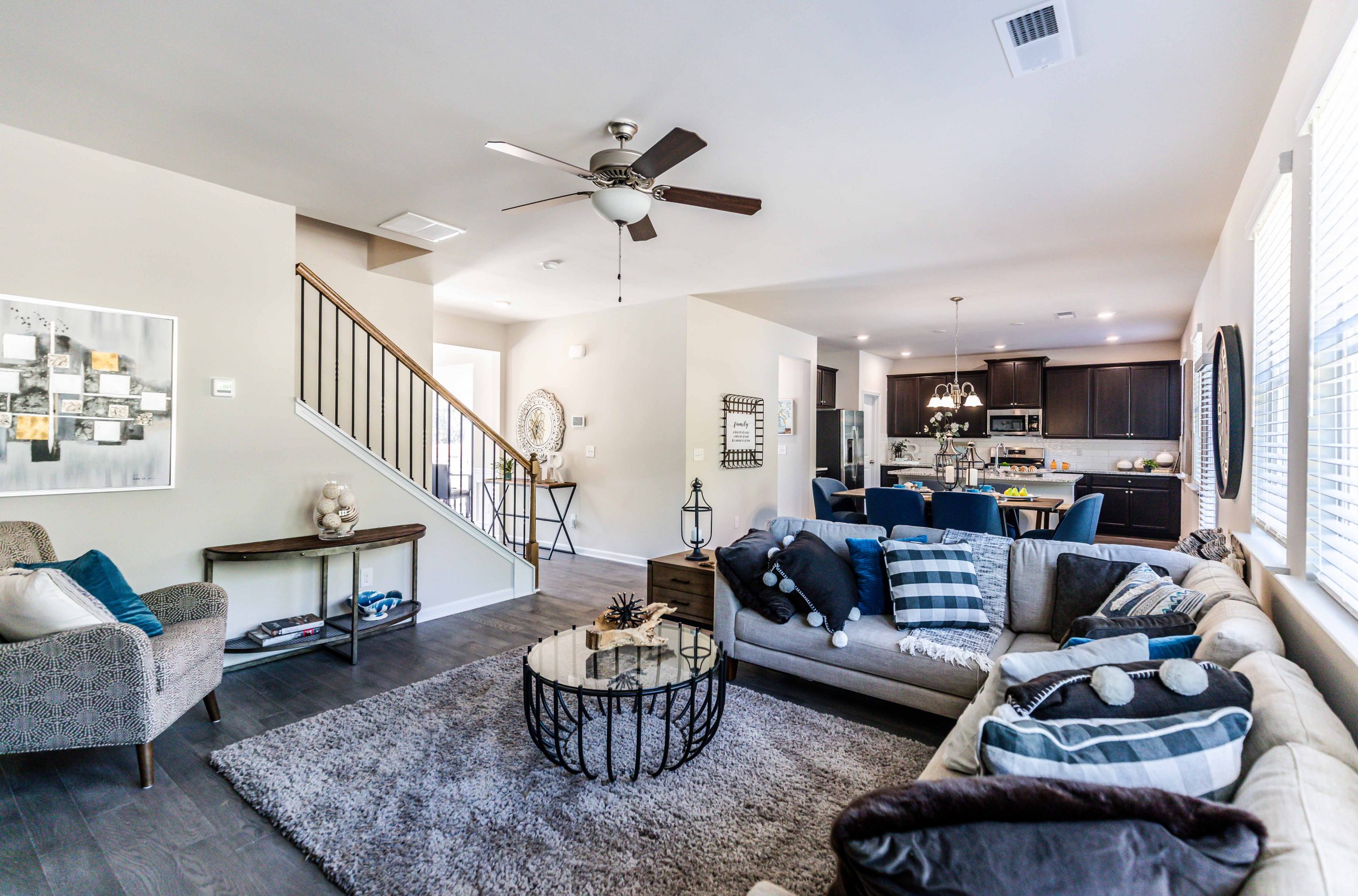Creating a Zen Living Room: 10 Tips for Bringing Peace and Serenity into Your Home
In today's fast-paced world, finding moments of peace and serenity can be challenging. That's why it's essential to create a calming and balanced space in your own home. And what better place to start than with your living room, the heart of your home? With these 10 tips, you can transform your living room into a zen sanctuary that promotes relaxation and mindfulness.
How to Create a Zen Living Room: 7 Steps to Achieving a Calm and Balanced Space
Creating a zen living room doesn't have to be a daunting task. With these seven easy steps, you can achieve a peaceful and balanced space in no time.
Step 1: Declutter and Simplify
One of the key principles of zen is simplicity. Start by decluttering your living room and getting rid of anything that doesn't serve a purpose or bring you joy. Keep only the essentials and find creative storage solutions to hide away any clutter.
Step 2: Incorporate Natural Elements
Bringing nature into your living room is essential for creating a zen space. Add plants, such as peace lilies or snake plants, to purify the air and promote a sense of calm. You can also incorporate natural materials, such as wood, stone, and bamboo, through furniture and decor pieces.
Step 3: Choose Soothing Colors
The colors you choose for your living room can greatly impact its overall atmosphere. Opt for soft, muted tones like beige, grey, or sage green to create a calming and relaxing environment. Avoid bright and bold colors that can be overstimulating.
Step 4: Add Soft Textures and Warm Lighting
Incorporating soft textures and warm lighting can make your living room feel cozy and inviting. Add plush cushions and throw blankets in natural materials like cotton or linen for a comfortable and zen-like feel. Use warm, dim lighting to create a soothing and intimate atmosphere.
Step 5: Practice Feng Shui
Feng shui is an ancient Chinese philosophy that focuses on balancing the energy, or chi, in a space. In a zen living room, it's important to arrange furniture in a way that promotes flow and harmony. Avoid cluttering the space and keep the main seating area open and inviting.
Step 6: Incorporate Mindfulness and Meditation
A zen living room is not just about the physical space; it's also about the mindset. Dedicate an area in your living room for meditation and mindfulness practices. This could be a cozy corner with a meditation cushion or a designated space for yoga and stretching.
Step 7: Keep it Minimalist
The key to a zen living room is to keep things simple and minimalistic. Avoid overcrowding the space with too much furniture or decor. Stick to a few essential pieces that have a purpose and bring you joy.
Zen Living Room Ideas: Inspiration for a Tranquil and Minimalist Space
If you're still unsure of how to create a zen living room, here are some ideas to inspire you:
1. Minimalistic and Monochromatic
Stick to a monochromatic color scheme, such as all-white or shades of grey, to create a clean and minimalistic look. Add a few pops of greenery for a touch of nature.
2. Japanese-inspired
Incorporate Japanese elements, such as tatami mats and shoji screens, for an authentic zen feel. Keep the space clutter-free and add a few traditional Japanese decor pieces for a serene ambiance.
3. Bohemian Zen
For a more eclectic and bohemian style, mix and match different textures and patterns in neutral tones. Add a few natural elements, like a woven rug or macrame wall hanging, for a zen touch.
4. Coastal Zen
Inspired by the calming vibes of the ocean, create a zen living room with a coastal theme. Incorporate natural materials, such as jute and rattan, and add touches of blue and white for a refreshing and tranquil space.
The Elements of a Zen Living Room: Incorporating Nature, Light, and Texture
Now that you have some ideas for your zen living room, let's dive deeper into the essential elements that make a space truly zen.
Nature: As mentioned before, incorporating natural elements, such as plants and natural materials, is crucial for creating a zen living room. These elements bring a sense of harmony and balance to the space.
Light: Natural light is the best source of light for a zen living room. So make sure to keep your windows unobstructed and let in as much sunlight as possible. Use soft, warm lighting in the evenings to create a cozy and calming atmosphere.
Texture: Soft textures, like plush cushions and throw blankets, can make your living room feel comfortable and inviting. Incorporating natural textures, such as wood and stone, can also add depth and warmth to the space.
Decluttering and Simplifying: The Key to a Zen Living Room
As mentioned earlier, decluttering and simplifying your living room is the first step towards creating a zen space. Here are some tips to help you declutter and keep your living room zen:
1. Get rid of anything you don't need or love.
Start by going through your living room and getting rid of anything that doesn't serve a purpose or bring you joy. This could be old magazines, unnecessary decor items, or furniture that you no longer use.
2. Find creative storage solutions.
To avoid clutter, find creative storage solutions to hide away items that you don't want to display. This could be baskets, shelves, or hidden storage compartments in furniture pieces.
3. Keep surfaces clear.
Avoid cluttering surfaces, such as coffee tables and shelves, with too many items. Stick to a few essential pieces that bring you joy and have a purpose.
Meditation and Mindfulness in the Living Room: Creating a Zen Space for Relaxation
With our busy lives, it's important to have a space dedicated to relaxation and mindfulness. Your zen living room can serve as a peaceful sanctuary where you can practice meditation and mindfulness. Here are some tips to help you create a zen space for relaxation:
1. Dedicate a specific area for meditation.
Choose a corner or small area in your living room to dedicate to meditation and mindfulness. This could be a cozy spot with a meditation cushion, candles, and plants.
2. Keep distractions to a minimum.
Make sure your zen space is free from distractions, such as electronic devices and noise. This will help you focus and fully immerse yourself in your meditation or mindfulness practice.
3. Incorporate calming elements.
Add elements to your zen space that promote relaxation and calmness, such as essential oils, candles, and soft lighting. You can also hang calming artwork or play soothing music in the background.
Choosing the Right Colors and Materials for a Zen Living Room
As mentioned earlier, choosing the right colors and materials is crucial for creating a zen living room. Here are some tips to help you make the right choices:
1. Stick to neutral and muted tones.
Neutral and muted tones, such as beige, grey, and earthy tones, promote a sense of calmness and simplicity. Avoid bright and bold colors that can be overstimulating.
2. Incorporate natural materials.
Incorporating natural materials, such as wood, stone, and bamboo, can add warmth and a sense of nature to your living room. These materials also promote a connection to the earth, which is an essential aspect of zen living.
Feng Shui in the Living Room: Arranging Furniture for a Harmonious and Balanced Space
Feng shui is an ancient Chinese philosophy that focuses on the arrangement of furniture and decor to promote balance and harmony in a space. Here are some feng shui tips for arranging your living room furniture:
1. Keep the main seating area open and inviting.
In a zen living room, it's important to have a clear and open main seating area. Avoid cluttering the space with too much furniture and leave enough space for energy to flow freely.
2. Place furniture in a circular or oval shape.
According to feng shui principles, circular and oval shapes promote flow and harmony. Arrange your furniture in a circular or oval shape to promote a sense of balance and connection.
3. Incorporate the five elements.
The five elements of feng shui are wood, fire, earth, metal, and water. Incorporate these elements in your living room through furniture and decor pieces to promote balance and harmony.
Incorporating Plants and Natural Elements in a Zen Living Room
Plants and natural elements are crucial for creating a zen living room. Here are some tips for incorporating them into your space:
1. Choose low-maintenance plants.
To avoid adding stress to your life, choose plants that are easy to care for, such as peace lilies, snake plants, or spider plants. These plants are known for their air-purifying qualities and can thrive in low-light conditions.
2. Use natural materials in furniture and decor.
Incorporating natural materials, such as wood, stone, and bamboo, in furniture and decor pieces can add a touch of nature to your living room. These materials also promote a sense of grounding and balance.
3. Create a focal point with a large plant.
A large plant, such as a fiddle leaf fig or a monstera, can serve as a beautiful and calming focal point in your living room. Place it in a corner or next to a window for maximum impact.
Creating a Cozy and Inviting Zen Living Room with Soft Textures and Warm Lighting
A zen living room should feel cozy and inviting, like a warm hug. Here are some tips for creating a cozy and inviting space:
1. Incorporate soft textures.
Add soft textures, such as plush cushions and throws, to your living room for a cozy and comfortable feel. Stick to natural materials, like cotton and linen, for a zen touch.
2. Use warm and dim lighting.
Warm and dim lighting can create a calming and intimate atmosphere in your living room. Use table lamps, floor lamps, and candles to achieve the right level of warmth and coziness.
3. Add personal touches.
To make your zen living room truly feel like home, add personal touches that bring you joy. This could be family photos, artwork, or sentimental decor pieces.
Creating a Zen Living Room: The Key Elements

Incorporating Natural Elements
 When it comes to designing a zen living room, one of the key elements to keep in mind is incorporating natural elements. This means bringing in elements from nature such as plants, wood, and stone to create a sense of tranquility and balance in the space.
Natural elements not only add visual interest and texture, but they also have a calming effect on the mind and body.
Consider adding a few potted plants or a small indoor water feature to your living room to bring in a sense of nature.
When it comes to designing a zen living room, one of the key elements to keep in mind is incorporating natural elements. This means bringing in elements from nature such as plants, wood, and stone to create a sense of tranquility and balance in the space.
Natural elements not only add visual interest and texture, but they also have a calming effect on the mind and body.
Consider adding a few potted plants or a small indoor water feature to your living room to bring in a sense of nature.
Decluttering and Simplifying
 Another important aspect of a zen living room is decluttering and simplifying the space.
A cluttered and chaotic room can create a feeling of stress and anxiety, which goes against the principles of zen.
To achieve a minimalist and serene look,
keep only essential items
in the living room and
find creative storage solutions
for items that may cause visual clutter. This will create a spacious and clean atmosphere, allowing for a more peaceful and harmonious living space.
Another important aspect of a zen living room is decluttering and simplifying the space.
A cluttered and chaotic room can create a feeling of stress and anxiety, which goes against the principles of zen.
To achieve a minimalist and serene look,
keep only essential items
in the living room and
find creative storage solutions
for items that may cause visual clutter. This will create a spacious and clean atmosphere, allowing for a more peaceful and harmonious living space.
Mindful Placement of Furniture
 The placement of furniture in a zen living room is crucial in creating a sense of flow and balance.
Choose furniture that is simple and functional, avoiding anything too ornate or bulky.
Keep furniture to a minimum and
arrange it in a way that promotes a sense of openness and connectivity.
Also, be mindful of the placement of furniture in relation to natural light and other elements in the room to create a harmonious and balanced space.
The placement of furniture in a zen living room is crucial in creating a sense of flow and balance.
Choose furniture that is simple and functional, avoiding anything too ornate or bulky.
Keep furniture to a minimum and
arrange it in a way that promotes a sense of openness and connectivity.
Also, be mindful of the placement of furniture in relation to natural light and other elements in the room to create a harmonious and balanced space.
Soft and Soothing Color Palette
 The colors used in a zen living room should be soft, soothing, and natural.
Neutral colors such as beige, white, and grey are perfect for creating a calming and peaceful atmosphere.
You can also add pops of muted colors such as sage green or soft blue for a touch of visual interest.
Avoid using bold or bright colors as they can be overwhelming and disrupt the sense of tranquility.
Remember, a zen living room is all about creating a sense of balance and harmony.
The colors used in a zen living room should be soft, soothing, and natural.
Neutral colors such as beige, white, and grey are perfect for creating a calming and peaceful atmosphere.
You can also add pops of muted colors such as sage green or soft blue for a touch of visual interest.
Avoid using bold or bright colors as they can be overwhelming and disrupt the sense of tranquility.
Remember, a zen living room is all about creating a sense of balance and harmony.
Creating a Cozy Ambiance
 Lastly, to truly achieve a zen living room, it is important to create a cozy and inviting ambiance.
Soft lighting, such as dimmable lamps or candles, can create a warm and soothing atmosphere.
Adding soft textures through pillows, blankets, and rugs can also add to the coziness of the space.
Choose natural and sustainable materials for these items to maintain the overall zen aesthetic.
With the right ambiance, your living room will become a peaceful sanctuary, perfect for relaxation and rejuvenation.
In conclusion, a zen living room is all about creating a space that promotes relaxation, harmony, and balance. By incorporating natural elements, decluttering, mindful furniture placement, a soft color palette, and a cozy ambiance, you can create a serene and peaceful living room that will bring a sense of calm and tranquility to your daily life. Remember, simplicity is key in achieving a zen living room, so be intentional with your design choices and create a space that speaks to your inner peace.
Lastly, to truly achieve a zen living room, it is important to create a cozy and inviting ambiance.
Soft lighting, such as dimmable lamps or candles, can create a warm and soothing atmosphere.
Adding soft textures through pillows, blankets, and rugs can also add to the coziness of the space.
Choose natural and sustainable materials for these items to maintain the overall zen aesthetic.
With the right ambiance, your living room will become a peaceful sanctuary, perfect for relaxation and rejuvenation.
In conclusion, a zen living room is all about creating a space that promotes relaxation, harmony, and balance. By incorporating natural elements, decluttering, mindful furniture placement, a soft color palette, and a cozy ambiance, you can create a serene and peaceful living room that will bring a sense of calm and tranquility to your daily life. Remember, simplicity is key in achieving a zen living room, so be intentional with your design choices and create a space that speaks to your inner peace.

:max_bytes(150000):strip_icc()/cdn.cliqueinc.com__cache__posts__252404__zen-living-rooms-252404-1521148980049-image.700x0c-8fcb2af5edbe4cec9f3caed34ecf2f49.jpg)

